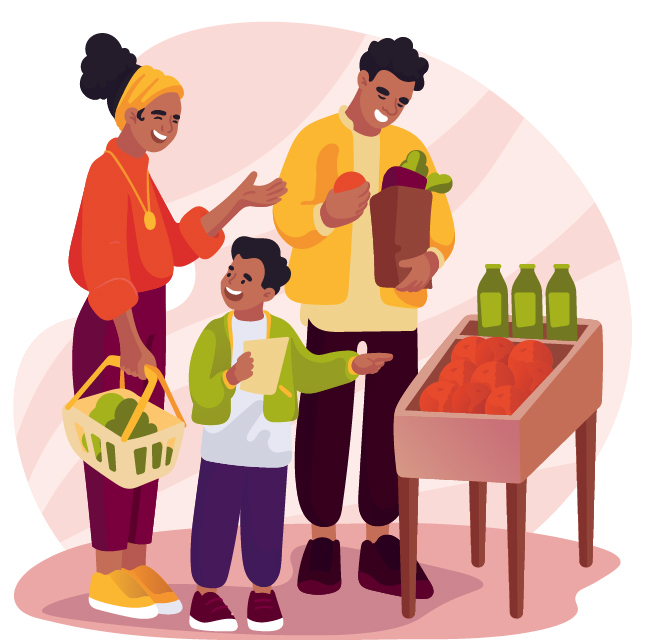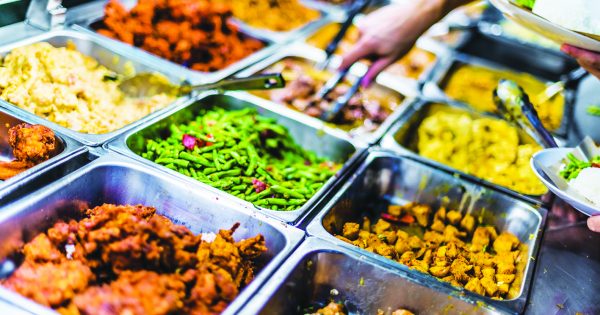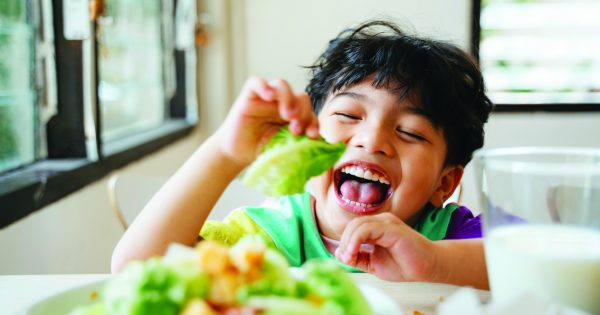Grocery shopping trips, food preparation and cooking can be a fun and educational experience when you get your little ones involved. This is also the best opportunity to teach and demonstrate food safety and hygiene to them! Here are some quick tips on how to teach your kids about this topic based on different situations.
Shopping trips with kids
- Check the quality of food: Teach your child to check the expiry date of food products and to ensure that the packaging is not damaged, dirty or dented. Food products like fruits and veggies should be fresh. Let them play the role of a food inspector who checks the quality of food.
- Follow the right order: The ideal sequence of grocery shopping is to get dry goods first, then soft items (e.g. fruits, veggies), and refrigerated and frozen items last. You can send older kids to fetch the items accordingly, while younger kids can help you tick off the grocery list.
- Handle food appropriately: Your child can help organise different types of items in the cart. For example, ask them to separate meat and seafood from fruits and vegetables. Show them how to handle different types of food, e.g. to wash their hands after handling meat and fish.
Cooking with kids
- Give age-appropriate tasks: Your child can help to wash, measure, stir or mix food depending on their capability. You or another adult should always be present to supervise your child and to handle hot or sharp items.
- Dress appropriately: Show your child the proper attire when preparing food. Wear an apron, remove any accessories (like bracelets or watches) and tie back long hair. Put on oven mitts or gloves when handling hot objects. This way your child also gets to play ‘dress-up’ when cooking.
- Keep it clean: Make sure your child washes their hands when helping you. They can help keep the countertops clean, wash fruits and vegetables, and clean up after cooking. Teach them to prevent cross-contamination by using different containers and utensils for raw and cooked ingredients.
- Keep it safe: Remind them to be extra careful with hot or sharp objects, and to not run or play roughly in the kitchen. Older children can help you wipe any spills immediately. Gadgets should be put away while cooking to avoid distraction.
Storing food with kids
- Store food properly: Tell them where to keep different types of food. For example, milk, eggs and vegetables should be kept in the fridge, while dry foods like rice, cereal and legumes should be stored in a cool, dry place at room temperature. Your child can help you store foods after shopping.
- Know how long to keep food: Inform your child that cooked foods or meal leftovers have to be stored in the fridge within two hours after cooking and cannot be kept longer than two days. But frozen food can be kept for three months in a standard home freezer.
When we talk about food safety and hygiene, it is not only limited to when we eat. The principles of food safety and hygiene begin in the market and continue in the kitchen, even before the food arrives on the dining table. One final tip: start by teaching your little one proper handwashing as it is one of the most important aspects of food safety and hygiene.






Comments